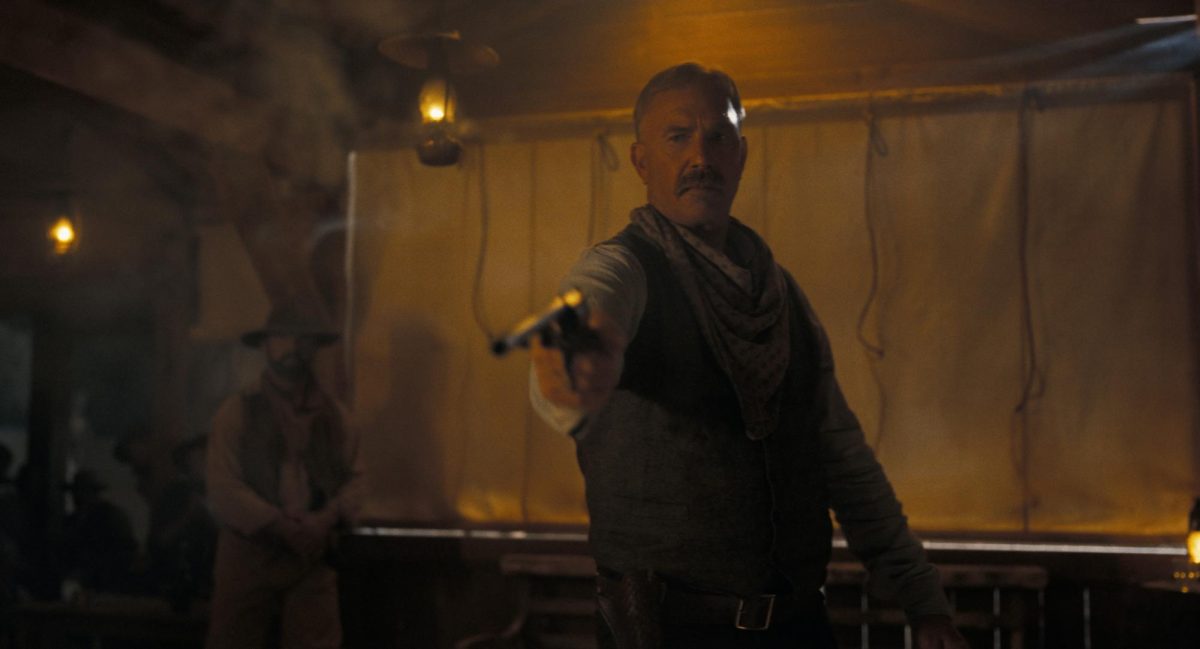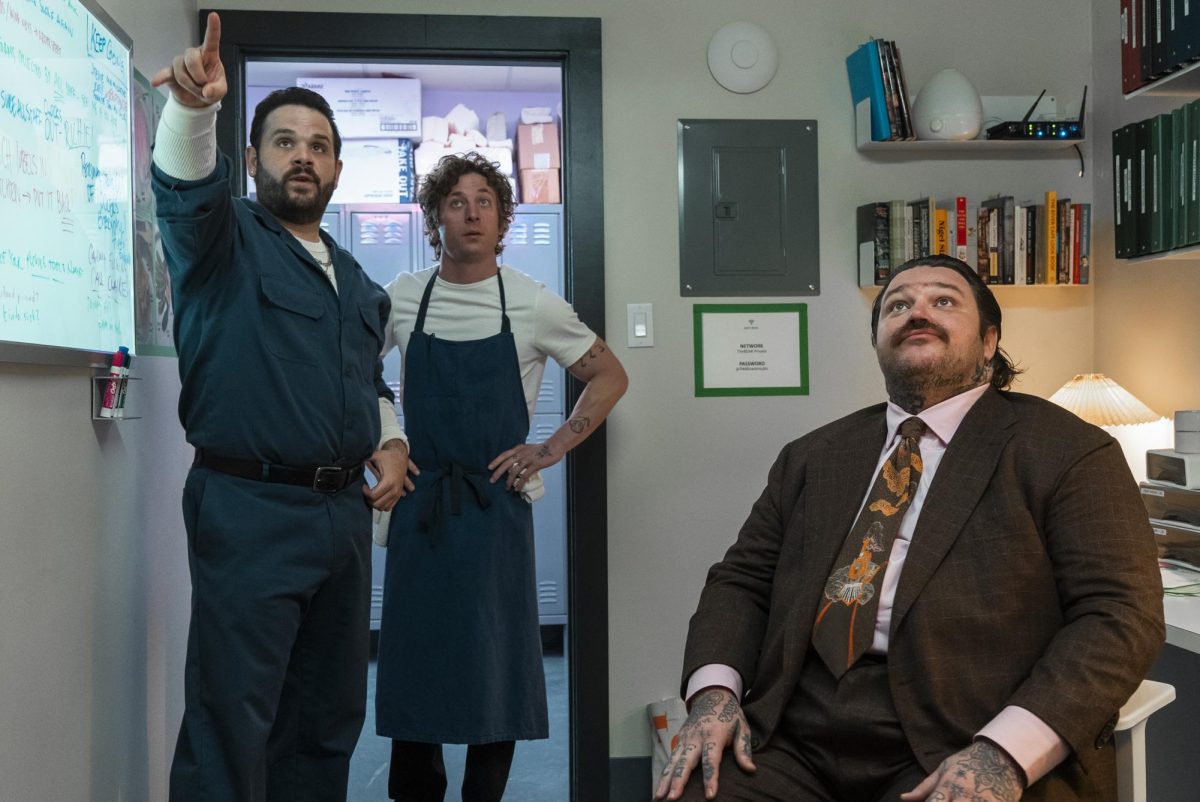When the words food and television show are put together, most people think of shows like “The Great British Bake Off,” “Chopped” or “Cutthroat Kitchen.” These people are expecting a show in which a number of contestants cook for judges, stressing over the creation of the tastiest and prettiest dish and then people get picked off one by one until the best chef wins a grand prize. “Samurai Gourmet” is not your average food show. A Netflix Original Series, this Japanese live action show is an adorable slice of life about an elderly Japanese man who is rediscovering the joy in his life after retiring. With only one season and short episodes, this was easy to watch in a few hours.
Warning: This article contains spoilers. Everything beyond this point will be about what happens during “Samurai Gourmet.”
60-year-old samurai enthusiast Takeshi Kasumi (Naoto Takenaka) doesn’t know what to do with himself after retiring from his job as department chief of a corporate office. The first time he goes out to wander, he finds himself walking the same path he took every morning to get to work. After realizing what he has done, he decides to stop at a restaurant he regularly passed before and rediscovers his love for food and confidence through interactions with a brave masterless samurai.
To Binge or Not to Binge?
(Once again, there are spoilers in the next few paragraphs.)
As a slice of life, “Samurai Gourmet” is not action-packed or even very quickly paced — and all of it is in Japanese with subtitles in English. In episodes that range from 16 to 24 minutes we follow Kasumi through the early days of his retirement. Kasumi interacts with his wife, eats amazing food and starts to learn how to be comfortable enough in his own skin to help those who need it.
“Samurai Gourmet” is definitely for foodies, but doesn’t focus solely on the food. Kasumi loves food and it motivates much of what he does — like in episode five, “Bento Lunch on Set,” when he signs up to be an extra in a movie to get a free catered lunch — he explores the city he lives in, spends time with his wife and friends and tries a variety of different foods.
The samurai part of the show comes into play whenever Kasumi is feeling insecure or nervous about something. The masterless samurai appears in the restaurant or on the street and transports the area back in time. The characters causing trouble and the surrounding guests, except for Kasumi, are changed into samurai or citizens during the Warring States period (1467-1567) of Japanese history. During these confrontations, the samurai lives by his honor code and encourages Kasumi to become braver and less anxious about what others think of him.
The characters in “Samurai Gourmet” are adorable and relatable. It was easy to connect with them on a personal level, because they were meant to imitate real people. Because the audience mostly interacts with Kasumi, he is given more depth than other characters, but at his core he is a happy elderly man with simple pleasures and a desire to do better. I was most interested in his development because of the amazing framing of the plot and seeing him change his relationship with his wife — Shizuko (Suzuki Honami) — was heartwarming. It’s very easy to root for Kasumi’s happiness, because he is obviously trying his best to be himself and never comes across as overbearing or rude. The audience ends up wanting him to achieve his goal of becoming like the masterless samurai.
Watching and listening to Kasumi tell the stories of his past was like listening to a grandparent recount their favorite childhood memories. The camera focus would soften, color saturation would fade and there would be a golden tinge to the scene as he told the story of his first trip to the ocean.
“Samurai Gourmet” is a cute peek into the day-to-day lifestyle of a retired Japanese couple and a delicious look into the Japanese take on a variety of different cuisines. From Italian to traditional foods, gorgeous camera angles were used to capture the cooking process of each food and Kasumi outlines exactly why each dish is cooked (or not cooked) to perfection. The show beautifully balances the foodie aspect and the storylines to create a great plot and illustrate the grace and effort that goes into many of the dishes highlighted by the show.
I would absolutely recommend “Samurai Gourmet” to foodies and people who like stream-of-consciousness storytelling. The pace was perfect for depicting a slice of life, and the characters were sweet — though they could be a little cheesy at times. But this was presented in a way that worked with the characterization of each person and added to the experience of the show overall. The relationships between the characters were believable. Kasumi and his wife fit together the way happy couples should and make each other better through small interactions that illustrate a good and strong relationship — which is great, because the audience is expected to assume they’ve been together for quite some time. The food shots were beautiful and didn’t drag on, even though the processes were outlined in great detail.
Best Episode: Episode 12, “A Memory of Hashed Beef and Rice.” As far as season finales and memories go, this was the sweetest and has a story that makes the inner romantic in everyone squeal with delight.
Similar Shows: “Chef’s Table,” “Good Morning Call,” “Let’s Eat” and “The Cravings” are all similar to “Samurai Gourmet.” I definitely recommend “Good Morning Call,” though it is the most different from “Samurai Gourmet,” because it’s not centered around food.
Trigger Warnings: Alcohol consumption. Kasumi really likes his beer, but drinks fairly responsibly and gets drunk only once in the season.
Rating: 5 out of 5 stars
“Samurai Gourmet”
Available to stream on Netflix
12 episodes, approximately 4 hours












